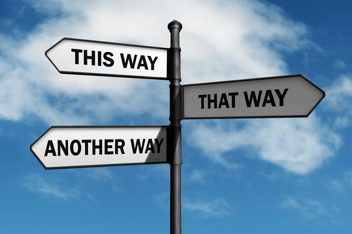
One of the things I like most about my work is the ability to help individuals on teams connect with their own creativity so the team can build innovation capacity and become more productive. One of the most effective ways I’ve found for doing this is by introducing the FourSight™ innovation process and tools to a team. The process helps people use creative thinking and produce innovation by taking a structured approach to clarifying problems, generating, developing and implementing ideas.
Besides the fact that FourSight™ makes innovation structural and language based, I like using FourSight™ because it has a psychometric assessment that helps people understand their thinking preferences, or cognitive profile, for being creative and how they can bring their best thinking to work.
Often, people who have different cognitive profiles find the differences too hard to cope with. The team fails to achieve peak performance because they find it “impossible” to collaborate, using the argument that other team members “don’t get it”. Conflict can be valuable and can allow a team to achieve full potential, the FourSight™ assessment can help people understand how to make diversity an asset.
Sarah Thurber, the Managing Partner at FourSight™, recently wrote a newsletter article about how diversity on teams can actually be a benefit to team performance. She explained this by sharing the experience of two oppositely profiled executives on a team who recently went through a FourSight™ Assessment debrief.
Here’s a summary of the story.
A pair of executives, who were long-term friends and colleagues, laughed out loud during an executive training session. The source of the laughter? The pair, who were working for a large Fortune 100 company, had received their FourSight™ profiles. This team was known in the company for their dynamic and their ability to work through any challenge.
The pair still found challenges tough. Having friendship to support their work relationship often resulted in a cognitive battle. After debate and dissecting each other’s preferred approaches, the pair was always able to come to a conclusion that would produce outstanding results.
At the FourSight™ training session, the pair had discovered that they were exact opposites. Each high preference was countered with a low preference in the other person. FourSight™ would label one as an “Analyst” (a person who scores as a high Clarifier and a high Developer). The other is labelled as a “Driver” (a person who scores as a high Ideator and high Implementer). On the FourSight™ combined graphed profile of the pair, a diamond pattern (known as an argyle) was the result.
In the training session, the pair shared with the group their results, admitting that collaborating was often very strenuous. Each collaboration resulted in a round of questioning to determine whose approach was more appropriate. The pair knew that collaborating, though challenging, would produce better results compared to any work they could complete independently.
The pair’s work results are consistent with findings of the creativity expert Min Basadur. In his research, Basadur determined that people who had a similar cognitive preference would enjoy working with each other. This pairing would result in a fun, natural, pleasant and easy collaboration. Alternatively, people who had different cognitive preferences were more likely to struggle, argue, disengage and experience conflict. However, the diverse pairing, if the team was able to overcome the challenge, would tend to produce better results.
FourSight™ helps you overcome the challenge of diversity on teams by short-circuiting conflict with an awareness of what it takes to produce innovation and a greater appreciation for how individual preferences create value across the innovation process.
Want to bring FourSight™ to your team?
I'll listen to what you're going through and work with you to find a solution.


